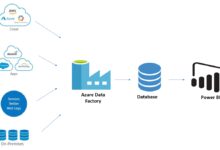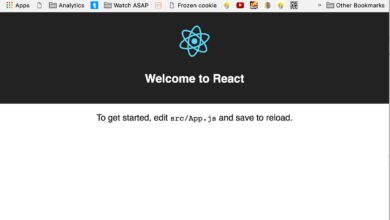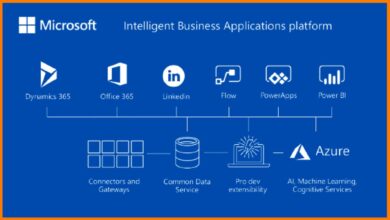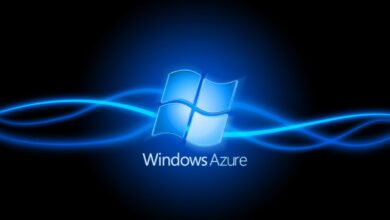Sign In to Azure: 7 Powerful Steps to Master Access Now
Want to sign in to Azure but unsure where to start? You’re not alone. Millions of users navigate Microsoft’s cloud platform daily, and knowing how to securely and efficiently sign in is your first step toward unlocking powerful cloud tools.
Understanding What It Means to Sign In to Azure

Signing in to Azure is more than just entering a username and password. It’s the gateway to managing cloud resources, deploying applications, and securing digital assets across Microsoft’s global infrastructure. Whether you’re an IT admin, developer, or business user, understanding the sign-in process is foundational.
The Role of Azure Active Directory (Azure AD)
Azure Active Directory (Azure AD) is the identity and access management service that powers every sign-in attempt. Unlike traditional on-premises Active Directory, Azure AD is cloud-native and supports modern authentication protocols like OAuth 2.0, OpenID Connect, and SAML 2.0.
- Azure AD authenticates users across Microsoft 365, Azure, and thousands of third-party apps.
- It enables single sign-on (SSO), so users don’t need to remember multiple passwords.
- It supports multi-factor authentication (MFA) to enhance security.
“Azure AD is the backbone of identity in the Microsoft cloud. Without it, you can’t sign in to Azure.” — Microsoft Documentation
Different Types of Azure Accounts
Not all Azure accounts are the same. The type of account you use affects how you sign in and what resources you can access.
- Work or school account: Provided by an organization using Microsoft 365 or Azure AD. This is the most common for enterprise users.
- Microsoft personal account: Used with services like Outlook.com, Xbox, or Skype. Can be used to sign in to Azure if invited to a subscription.
- Guest user account: External users invited to collaborate in your Azure environment via Azure AD B2B.
When you sign in to Azure, the system detects your account type and routes your authentication accordingly.
Step-by-Step Guide to Sign In to Azure
Signing in to Azure is straightforward if you follow the correct steps. Whether you’re accessing the Azure portal for the first time or managing multiple subscriptions, this guide ensures a smooth experience.
Navigate to the Azure Sign-In Page
The first step is visiting the official Azure sign-in portal. Always use the correct URL to avoid phishing risks.
- Go to https://portal.azure.com, Microsoft’s official Azure portal.
- Avoid clicking on untrusted links—always type the URL directly or use a bookmark.
- The page automatically detects if you’ve signed in before and may show saved accounts.
This is your primary entry point to sign in to Azure, manage resources, and monitor cloud activity.
Enter Your Credentials
After reaching the portal, enter your email, phone, or Skype username associated with your Microsoft account.
- If you’re using a work or school account, enter your organizational email (e.g., user@company.com).
- If you’re using a personal Microsoft account, enter your Outlook.com or Hotmail address.
- Azure will verify your identity and prompt for additional authentication if required.
After entering your username, click Next to proceed to the password stage.
Complete Authentication and Access the Dashboard
Once your username is verified, enter your password. If multi-factor authentication (MFA) is enabled, you’ll be prompted to complete the second step.
- MFA methods include phone calls, text messages, authenticator apps, or biometric verification.
- After successful authentication, you’ll be redirected to the Azure dashboard.
- The dashboard displays your subscriptions, resource groups, and recent activities.
You’ve now successfully signed in to Azure and can begin managing your cloud environment.
Common Issues When Trying to Sign In to Azure
Even with a simple process, users often encounter obstacles when attempting to sign in to Azure. Understanding these common issues helps you troubleshoot quickly and maintain productivity.
Forgot Password or Locked Account
One of the most frequent problems is forgetting your password or getting locked out due to multiple failed attempts.
- Use the Forgot password? link on the sign-in page to reset it.
- Organizational accounts may require administrator approval for resets.
- Personal Microsoft accounts can reset via email or phone verification.
Microsoft’s self-service password reset (SSPR) feature reduces downtime and support tickets.
Multi-Factor Authentication Failures
MFA is a security best practice, but it can cause access issues if not set up correctly.
- Lost your phone? Use backup methods like alternate devices or verification codes.
- Authenticator app not syncing? Check time settings or re-scan the QR code.
- Ensure your MFA methods are up to date in your Azure AD profile.
“Over 99.9% of account compromises can be prevented with MFA.” — Microsoft Security Report
Region and Browser Compatibility Issues
Sometimes, the problem isn’t with credentials but with the environment you’re using.
- Use supported browsers: Chrome, Edge, Firefox, or Safari.
- Clear cache and cookies if the page behaves unexpectedly.
- Check if your region restricts access to certain Azure services.
Using outdated browsers or ad blockers can interfere with the Azure portal’s functionality.
Security Best Practices After You Sign In to Azure
Signing in to Azure is just the beginning. Securing your session and protecting your cloud environment is critical to prevent unauthorized access and data breaches.
Enable Multi-Factor Authentication (MFA)
MFA adds an extra layer of security by requiring two or more verification methods.
- Go to Microsoft Account Security to set up MFA.
- Admins can enforce MFA for all users via Azure AD Conditional Access policies.
- Use the Microsoft Authenticator app for push notifications and time-based codes.
MFA significantly reduces the risk of credential theft and phishing attacks.
Use Conditional Access Policies
Conditional Access is a powerful Azure AD feature that controls access based on specific conditions.
- Define policies that require MFA when accessing sensitive data.
- Block access from untrusted locations or devices.
- Require compliant devices (e.g., Intune-managed) for sign-in.
These policies ensure that even if credentials are compromised, access is still restricted.
Monitor Sign-In Activity Regularly
Azure provides detailed logs of every sign-in attempt, successful or failed.
- Access sign-in logs via the Azure AD > Monitoring > Sign-in logs section.
- Filter logs by user, app, IP address, or status (success/failure).
- Set up alerts for suspicious activities like logins from unusual locations.
Regular monitoring helps detect anomalies and potential security threats early.
How to Sign In to Azure Using Different Methods
There’s more than one way to sign in to Azure. Depending on your role and needs, you can use various authentication methods beyond the standard username and password.
Using Azure CLI to Sign In
The Azure Command-Line Interface (CLI) allows developers and admins to manage Azure resources via terminal commands.
- Install Azure CLI from Microsoft’s official site.
- Run
az loginin your terminal. - A browser window opens where you sign in to Azure using your credentials.
After authentication, the CLI stores your session and allows you to run commands like az group list to view resource groups.
Using Azure PowerShell
Azure PowerShell is another powerful tool for automating tasks and managing resources.
- Install the
Azmodule usingInstall-Module -Name Az. - Run
Connect-AzAccountto start the sign-in process. - Enter your credentials in the pop-up window.
Once signed in, you can use cmdlets like Get-AzVM to retrieve virtual machines.
Programmatic Access with Service Principals
For applications and automation scripts, use a service principal instead of a user account.
- Create a service principal via the Azure portal or CLI.
- Assign roles (e.g., Contributor, Reader) to define permissions.
- Use client ID and secret (or certificate) to authenticate programmatically.
This method is essential for CI/CD pipelines, Azure Functions, and backend services.
Managing Multiple Azure Subscriptions
Many users have access to multiple Azure subscriptions—whether for different projects, departments, or clients. Knowing how to manage them after you sign in to Azure is crucial for efficiency.
Switching Between Subscriptions
After signing in, you might not see all your subscriptions by default.
- In the Azure portal, click your account name in the top-right corner.
- Select Switch directory or Change directory to access different tenants.
- Use the subscription filter in the portal to switch between active subscriptions.
In Azure CLI, use az account list to view available subscriptions and az account set --subscription "Subscription Name" to switch.
Setting Default Subscriptions
To avoid specifying subscriptions in every command, set a default.
- In Azure CLI:
az account set --subscription "My Default Sub". - In Azure PowerShell:
Select-AzSubscription -SubscriptionName "My Sub". - The default subscription is used unless overridden in commands.
This streamlines workflows, especially for developers and DevOps engineers.
Using Azure Lighthouse for Cross-Tenant Management
Azure Lighthouse enables service providers to manage multiple customer environments from a single portal.
- Customers delegate specific resources to a provider’s Azure AD tenant.
- Providers can sign in to Azure and manage resources across clients without switching accounts.
- Improves scalability and reduces operational overhead.
This is ideal for MSPs (Managed Service Providers) and cloud consultants.
Advanced Tips for Power Users Who Sign In to Azure
For experienced users, mastering advanced techniques can save time, improve security, and enhance automation.
Using Azure AD App Registrations for Custom Apps
If you’re building applications that interact with Azure, register them in Azure AD.
- Go to Azure AD > App registrations to create a new app.
- Define redirect URIs, permissions, and authentication methods.
- Use the app’s client ID and secret to authenticate API calls.
This is essential for integrating third-party tools with Azure services.
Implementing Single Sign-On (SSO) for Enterprise Apps
SSO allows users to access multiple applications with one sign-in.
- Configure SSO in Azure AD for apps like Salesforce, Dropbox, or custom web apps.
- Supports SAML, OAuth, and password-based SSO.
- Reduces password fatigue and improves user experience.
After users sign in to Azure, they can seamlessly access connected apps without re-authenticating.
Automating Sign-In with Scripts and CI/CD Pipelines
In DevOps environments, automating Azure sign-in is critical for continuous deployment.
- Use service principals with CI/CD tools like GitHub Actions, Azure DevOps, or Jenkins.
- Store credentials securely using secrets management (e.g., Azure Key Vault).
- Run
az login --service-principalwith client ID, secret, and tenant ID.
Automation ensures consistent, secure, and repeatable deployments.
How do I sign in to Azure if I don’t have an account?
You need either a work/school account provided by an organization or a Microsoft personal account. If you don’t have one, you can create a free Microsoft account at https://signup.live.com and use it to access Azure if invited to a subscription.
What should I do if I’m unable to sign in to Azure?
First, check your internet connection and browser compatibility. If credentials are correct but access is denied, reset your password or contact your Azure administrator. You can also check the Azure Service Health dashboard for outages.
Can I sign in to Azure from a mobile device?
Yes! Download the Microsoft Azure app from the iOS App Store or Google Play. It allows you to monitor resources, receive alerts, and manage services on the go. Authentication uses the same Azure AD process as the web portal.
Is it safe to sign in to Azure on public computers?
It’s not recommended. If you must, always sign out completely and avoid saving credentials. Use private browsing mode and ensure no one is watching your screen. Better yet, use your personal device with MFA enabled.
How do I sign out of Azure properly?
Click your profile icon in the top-right corner of the Azure portal and select Sign out. This ends your session and clears temporary tokens. For shared devices, also close the browser to ensure no residual data remains.
Signing in to Azure is the essential first step in leveraging Microsoft’s powerful cloud platform. From basic access to advanced automation, understanding the process—along with security best practices and troubleshooting tips—ensures you make the most of your cloud experience. Whether you’re a beginner or a power user, mastering how to sign in to Azure opens the door to innovation, scalability, and secure resource management.
Recommended for you 👇
Further Reading:









